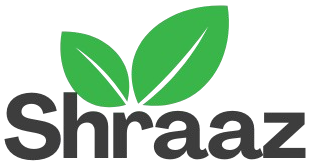Cost Differences Organic vs. Inorganic Food
Introduction
In recent years, organic food has surged in popularity, with consumers willing to pay premium prices for products labeled as organic. However, this raises an important question—is organic food really worth the higher cost compared to inorganic (conventional) food?
This article will provide an in-depth exploration of the factors behind the price differences between organic and inorganic food. We will look at what defines organic and inorganic food, why organic food is more expensive, and whether the added cost is justified from a nutritional, health, environmental, and financial perspective. Additionally, we will examine consumer perceptions and provide tips on how to make cost-effective choices when incorporating organic food into your diet.
With sustainability and health concerns at the forefront, understanding these cost differences is crucial for making informed food choices.
For a broader discussion of the overall distinctions between organic and inorganic food beyond just cost, check out our Complete Guide on the Differences Between Organic and Inorganic Food.
Understanding Organic vs. Inorganic Food: A Brief Overview
Before diving into price comparisons, it’s essential to understand the difference between organic and inorganic food. The term organic refers to the way agricultural products are grown and processed. Organic farming practices are designed to promote soil and water conservation, reduce pollution, and minimize the use of harmful chemicals.
What Qualifies as Organic Food?
To be classified as organic, food must meet certain government standards. These include:
- No synthetic fertilizers or pesticides are used
- Non-GMO (genetically modified organisms)
- No antibiotics or growth hormones for animals
- Use of natural fertilizers like compost or manure
What is Inorganic (Conventional) Food?
In contrast, inorganic food is grown using conventional farming methods, which often involve:
- Use of synthetic pesticides and fertilizers
- GMO crops that are resistant to pests and diseases
- Antibiotics and growth hormones for livestock
- Practices aimed at maximizing yield and reducing costs
| Feature | Organic Food | Inorganic Food |
| Pesticides & Fertilizers | Natural (e.g., compost, manure) | Synthetic (e.g., chemical fertilizers) |
| Genetic Modification | Non-GMO | Can include GMO crops |
| Animal Treatment | No antibiotics or growth hormones | Use of antibiotics and growth hormones allowed |
| Farming Practices | Soil health, biodiversity, and sustainability | High-yield, efficiency-focused |
Understanding these distinctions helps explain some of the price differences, as organic farming tends to be more labor-intensive and requires stricter regulations and certifications.
Price Comparison Between Organic and Inorganic Food
One of the primary barriers to purchasing organic food is the higher price tag. On average, organic products cost 10-30% more than their inorganic counterparts, with some items being even pricier. This difference in cost is most pronounced in fresh produce, dairy, and meat.
Average Price Comparison: Organic vs. Inorganic Food
To illustrate the price differences, here’s a table showing the average cost of common organic and inorganic foods:
| Food Item | Organic Price (per kg) | Inorganic Price (per kg) | Price Difference (%) |
| Apples | $4.00 | $2.50 | 60% |
| Milk | $2.00 | $1.30 | 54% |
| Chicken Breast | $10.00 | $6.50 | 54% |
| Broccoli | $3.50 | $2.00 | 75% |
As shown, the price of organic food can be significantly higher, making it a luxury for many households.
Why Is Organic Food More Expensive?
The higher prices of organic food are driven by several factors:
- Labor Costs: Organic farming often requires more manual labor for tasks like weeding, pest control, and crop rotation.
- Organic Certification: Farmers must pay for organic certification, which includes regular inspections to ensure compliance.
- Smaller Scale: Organic farms are generally smaller than conventional farms, leading to higher production costs.
- Natural Fertilizers: Organic farmers use natural inputs like compost and manure, which are more expensive and less efficient than synthetic fertilizers.
- Limited Supply: Organic food represents a small percentage of the overall food market, making it less accessible and pricier.
These factors combine to make organic food more expensive to produce, leading to higher retail prices.
Factors Contributing to Higher Organic Food Prices
Organic food’s higher price point can be attributed to multiple factors related to production, certification, and distribution. These factors not only increase the cost for producers but also for consumers, who end up paying more for products labeled as organic.
1. Labor-Intensive Farming Practices
Organic farming requires significantly more manual labor compared to conventional farming. Practices like hand-weeding, crop rotation, and companion planting are labor-intensive because organic farmers cannot rely on synthetic herbicides or pesticides. This increases labor costs, which are passed down to the consumer.
2. Higher Input Costs
Organic farmers use natural fertilizers like manure, compost, and cover crops instead of synthetic fertilizers. These natural alternatives are often more expensive to produce and less efficient than chemical fertilizers. Additionally, organic pest control methods, such as introducing predator insects or using organic-approved insecticides, can be costly and time-consuming.
3. Smaller Farm Scale
Organic farms tend to be smaller than conventional farms, and the economies of scale that benefit large conventional farms do not apply. Smaller production volumes lead to higher per-unit costs, which drives up prices for organic food at the grocery store.
4. Organic Certification Costs
Organic certification is a rigorous and costly process. Farmers seeking organic certification must undergo an inspection by a certification body, which verifies that the farm complies with organic standards. These certifications need to be renewed periodically, adding to ongoing costs. Furthermore, transitioning from conventional to organic farming can take several years, adding to the cost without immediate returns.
5. No Synthetic Pesticides
Conventional farms can use synthetic pesticides to control pests and diseases, increasing crop yield. Organic farms, however, rely on natural pest management methods, which are typically less effective and more expensive. The inability to use chemical treatments means organic farmers often face greater risks of crop loss, which is factored into the final price of their products.
6. Sustainability Investments
Many organic farms make substantial investments in sustainable farming practices, such as water conservation, soil health management, and biodiversity. These practices often have a long-term benefit to the environment but increase short-term costs for organic farmers.
7. Supply Chain and Transportation
Organic products must be stored, transported, and processed separately from conventional products to prevent contamination. This requires separate infrastructure, which increases logistical and transportation costs. Smaller batch sizes also mean fewer savings from bulk transportation.
Why Is Inorganic Food Cheaper?
While organic food comes with a higher price tag, inorganic (conventional) food is generally more affordable for several reasons. The use of synthetic chemicals and industrial farming methods allows conventional farmers to produce larger quantities of food at a lower cost, resulting in savings that are passed down to the consumer.
1. Mass Production and Economies of Scale
Conventional farms are often large-scale operations that benefit from economies of scale. These farms can produce food more efficiently and at a lower cost per unit by utilizing advanced machinery, automated systems, and mass production techniques. Larger farms also mean lower overhead costs, which contribute to cheaper prices for inorganic food.
2. Synthetic Fertilizers and Pesticides
Conventional farming uses synthetic fertilizers and pesticides to boost crop yield and prevent damage from pests. These chemicals are inexpensive to produce and highly effective at increasing food production. As a result, inorganic farming methods allow for higher yields and lower per-unit costs.
3. Government Subsidies
Many governments provide subsidies to conventional farmers, making it more affordable to grow and sell inorganic food. These subsidies reduce production costs and incentivize farmers to use conventional methods, which keeps the price of inorganic food relatively low. In contrast, organic farms do not receive as many subsidies, which further widens the price gap.
4. Shorter Growth Cycles
Genetically modified organisms (GMOs) and synthetic chemicals enable conventional farmers to grow crops more quickly. Faster growth cycles result in quicker harvests and more frequent planting, increasing overall yield and reducing costs. Organic farming, on the other hand, requires more time for plants to grow naturally, which leads to longer production cycles and higher costs.
5. High Yield and Less Waste
Conventional farming methods maximize yield and minimize waste by using chemicals that protect crops from disease, pests, and adverse weather conditions. Organic farming often experiences lower yields due to the lack of chemical protection, leading to a higher percentage of crops being lost or damaged, which can drive up prices for organic produce.
6. Cheaper Inputs
Inorganic farmers can rely on cheap chemical inputs like synthetic nitrogen fertilizers and pesticides to improve crop growth. These inputs are widely available and highly effective, making them a cost-efficient solution for boosting production. Organic farmers, by contrast, must use more expensive natural alternatives, increasing their input costs.
| Factor | Organic Food | Inorganic Food |
| Farming Scale | Smaller farms with limited economies of scale | Large-scale farms with high efficiency |
| Pesticides | Natural pest control methods | Synthetic pesticides, which are cheaper |
| Fertilizers | Natural inputs like manure and compost | Synthetic fertilizers that boost growth |
| Government Subsidies | Fewer subsidies available | Subsidized by many governments |
| Crop Yield | Lower yield due to natural growth processes | Higher yield with GMO crops and synthetic aids |
As shown, inorganic food’s lower price stems from highly efficient farming practices and significant external support that allows for faster, cheaper food production.
Is Paying More for Organic Food Justified?
Many consumers wonder whether the higher cost of organic food is justified by the purported health, environmental, and nutritional benefits. The decision to pay more for organic food depends on several factors, such as health priorities, environmental concerns, and budget constraints. Let’s explore whether these added benefits justify the extra price.
1. Health Benefits
One of the main reasons people opt for organic food is the belief that it is healthier. Organic produce is free from synthetic pesticides and herbicides, which are linked to potential health risks when consumed in large quantities over time. Some studies show that organic foods have lower pesticide residue levels than conventional foods.
However, research on whether organic food is nutritionally superior to inorganic food is mixed. According to a meta-analysis published in The British Journal of Nutrition, organic crops were found to have higher levels of antioxidants (up to 60% more), while conventional crops had higher concentrations of cadmium and pesticide residues. Yet, the overall nutrient content, such as vitamins and minerals, does not vary significantly between organic and inorganic foods.
| Category | Organic Food | Inorganic Food |
| Pesticides | Lower levels of synthetic pesticide residues | Higher levels of pesticide residues |
| Antioxidants | Higher antioxidant levels | Lower antioxidant levels |
| Nutritional Differences | Minimal differences in vitamins/minerals | Similar nutrient content |
Conclusion: If reducing exposure to chemicals is a priority, paying more for organic food may be worth it, especially for certain high-residue crops like strawberries, spinach, and apples, often listed on the Dirty Dozen list.
2. Environmental Impact
Organic farming practices focus on sustainability, soil health, and biodiversity. Organic farmers use techniques like crop rotation, composting, and natural fertilizers to maintain soil health. This helps preserve the quality of the land for future generations, reduces water pollution, and conserves biodiversity.
In contrast, conventional farming often relies on intensive monoculture, synthetic fertilizers, and pesticides, which can deplete soil health, contribute to water pollution, and harm wildlife. The environmental cost of conventional farming is substantial and is a key reason why many consumers choose organic products.
| Impact | Organic Farming | Conventional Farming |
| Soil Health | Promotes soil regeneration | Soil depletion due to synthetic inputs |
| Biodiversity | Encourages biodiversity and pollinator health | Negatively impacts biodiversity |
| Water Conservation | Uses natural methods to minimize water waste | Contributes to water contamination |
Conclusion: If environmental sustainability is important to you, paying a premium for organic food may be worthwhile as it supports farming practices that benefit the planet.
3. Taste and Freshness
Many consumers report that organic food tastes better and is fresher than inorganic food, especially when it comes to fruits and vegetables. Organic farms tend to be smaller and more localized, so their produce may spend less time in transit, resulting in fresher food with better flavor. However, taste is subjective, and not all consumers may notice the difference.
Conclusion: The perceived improvement in taste may justify the extra cost for some individuals, particularly if they value freshness and flavor in their meals.
4. Animal Welfare
For meat, eggs, and dairy, organic certification requires that animals are raised under more humane conditions. Organic livestock are fed organic feed, are not treated with antibiotics or growth hormones, and must have access to the outdoors.
| Standard | Organic Livestock | Conventional Livestock |
| Feed | Organic, non-GMO | Non-organic, often GMO feed |
| Antibiotics and Hormones | Prohibited | Allowed |
| Living Conditions | Must have access to pasture or outdoors | Often confined in smaller spaces |
Conclusion: For consumers who prioritize animal welfare, paying more for organic meat and dairy may be justified.
Long-term Cost Analysis: Organic vs. Inorganic
When considering whether organic food is worth the cost, it’s important to think about the long-term implications. Organic food’s benefits—such as reduced pesticide exposure, support for sustainable farming, and better animal welfare—may lead to potential long-term health and environmental savings.
1. Health Savings
By choosing organic, consumers may reduce their exposure to harmful pesticides and chemicals, potentially lowering the risk of certain health issues, such as pesticide-related illnesses, allergies, and some cancers. While these health benefits are hard to quantify, they may lead to long-term healthcare savings if they prevent serious health problems.
2. Environmental Savings
Choosing organic also means investing in the environment. Organic farming methods help protect soil health, water sources, and biodiversity, which can reduce environmental degradation and the need for future restoration efforts. The cost of environmental damage caused by conventional farming may be high in the long run, potentially surpassing the initial savings from cheaper inorganic food.
3. Economic Savings from Avoiding Food Waste
Organic produce, due to its freshness and shorter transit times, may last longer in the refrigerator, reducing food waste. While organic food is more expensive upfront, less spoilage and waste may lead to savings over time.
Conclusion: While organic food costs more upfront, the potential long-term health and environmental benefits might justify the expense, especially for families concerned with sustainability and health risks.
Are All Organic Products Worth the Extra Cost?
Not all organic products are created equal. For some foods, the price difference between organic and inorganic may not provide a significant benefit, while for others, the added value of organic is more apparent.
1. The Dirty Dozen and Clean Fifteen
The Environmental Working Group (EWG) publishes a yearly list of produce items that contain the highest levels of pesticide residues (the Dirty Dozen) and those with the lowest levels (the Clean Fifteen). For those on a budget, choosing organic versions of Dirty Dozen items—such as strawberries, spinach, and apples—may be worth the higher price, while opting for inorganic versions of Clean Fifteen items like avocados and onions could save money without compromising health.
| Dirty Dozen Produce | Clean Fifteen Produce |
| Strawberries | Avocados |
| Spinach | Sweet Corn |
| Apples | Pineapples |
| Grapes | Onions |
| Tomatoes | Cabbage |
2. Organic Packaged and Processed Foods
Many organic processed foods—like chips, cookies, and snacks—are still high in sugar, salt, and unhealthy fats. These items may not provide any significant health benefits over their conventional counterparts, so the extra cost may not be justified.
Conclusion: Prioritize organic choices for fresh produce, meat, and dairy, but consider skipping organic versions of processed and packaged foods.
Frequently Asked Questions (FAQs)
1. Why is organic food more expensive than inorganic food?
Organic food is more expensive due to several factors, including labor-intensive farming practices, higher input costs (natural fertilizers and pest control), smaller farm scales, organic certification costs, and the lack of synthetic chemicals that boost crop yields in conventional farming.
2. Are organic foods always healthier than inorganic foods?
While organic foods typically have lower pesticide residues and may contain higher antioxidant levels, the overall nutrient content (like vitamins and minerals) is similar to inorganic foods. The main health benefit of organic foods is the reduced exposure to synthetic pesticides and chemicals.
3. Is it worth paying extra for organic food?
This depends on your personal priorities. If you’re concerned about reducing chemical exposure, supporting sustainable farming, or ensuring better animal welfare, organic food may be worth the cost. However, if budget is your main concern, selectively choosing organic for the “Dirty Dozen” and saving on the “Clean Fifteen” can be a practical approach.
4. Can I save money by buying organic food?
Yes, you can save money on organic food by shopping at local farmers’ markets, buying seasonal produce, or purchasing in bulk. You can also prioritize organic for high-pesticide produce and buy conventional for low-pesticide items, such as those in the “Clean Fifteen” list.
5. Does organic food last longer than inorganic food?
Organic produce, especially when bought fresh from local sources, may last longer because it typically undergoes less processing and spends less time in transit. However, since it contains no preservatives, some organic foods may spoil faster if not stored properly.
6. Is organic meat better than inorganic meat?
Organic meat is generally considered better in terms of animal welfare and reduced exposure to antibiotics and growth hormones. Organic livestock must have access to the outdoors and are fed organic, non-GMO feed. This may result in higher-quality meat, but it also comes at a higher price.
7. What’s the difference between organic and conventional dairy products?
Organic dairy products come from cows that are not treated with antibiotics or synthetic hormones and are fed organic feed. Organic milk is also typically pasteurized at lower temperatures, which some believe retains more nutrients. Conventional dairy products may come from cows treated with hormones or antibiotics, making them less expensive but potentially more controversial.
8. Are organic processed foods healthier than conventional processed foods?
Not necessarily. Organic processed foods like chips, cookies, and snacks may still be high in sugar, salt, and unhealthy fats. It’s important to read labels carefully, as organic certification doesn’t mean a product is automatically healthy.
9. How can I afford organic food on a tight budget?
To afford organic food on a budget, consider the following strategies:
- Buy organic only for the Dirty Dozen fruits and vegetables, which are more prone to pesticide residue.
- Shop at local farmers’ markets for fresh, seasonal organic produce.
- Purchase organic products in bulk or look for sales and discounts.
- Grow your own organic herbs and vegetables if possible.
10. Is organic food better for the environment?
Yes, organic farming practices are typically better for the environment. Organic farming helps conserve water, improve soil health, and promote biodiversity by avoiding synthetic fertilizers and pesticides. These practices are generally more sustainable than conventional farming.





[…] To explore this topic in detail check out our comprehensive article on Cost Differences: Is Organic Food Really Worth It? […]